Discovering Jago: The Modern Michelangelo of Our Time
From Palazzo Bonaparte to Naples: A Journey Through the Soul of Marble
In 2022, I stumbled upon the extraordinary world of Jago during a visit to Palazzo Bonaparte in Rome. Located on Piazza Venezia, this historic building is not only a marvel in itself but also a venue for frequent and fascinating exhibitions. That visit was a revelation, a stirring encounter with an artist whose works transcend time and speak directly to the human soul.

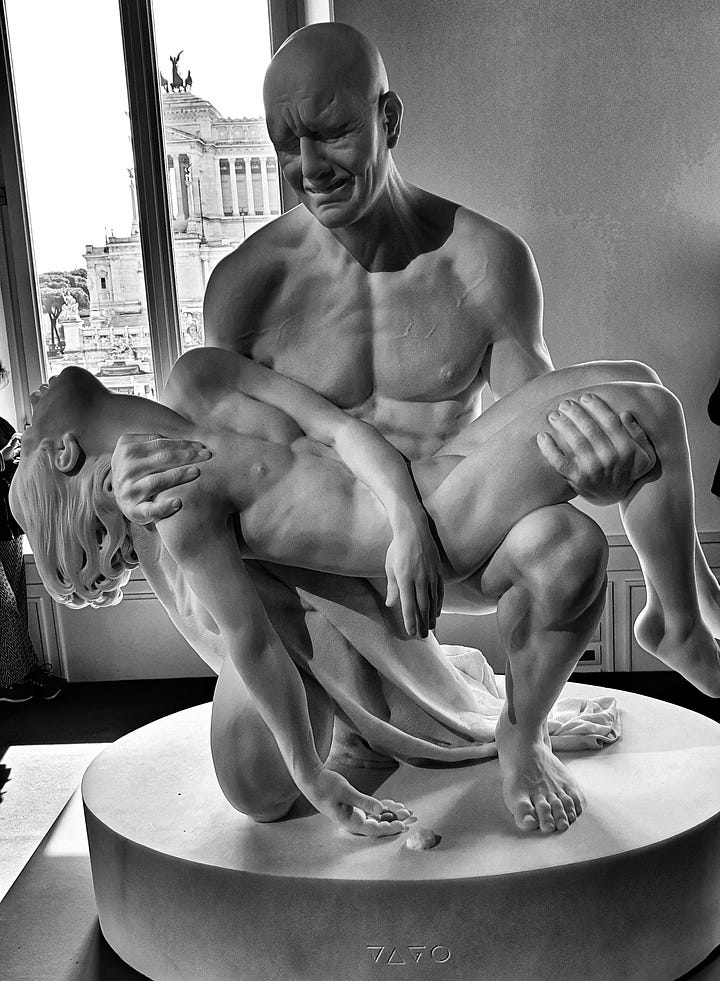
Later that year, one of Jago’s sculptures, Italian Marble (Marmo Italiano), was freely displayed on the Ponte degli Angeli in Rome. Positioned as a symbol against racism, this powerful gesture reflected the artist’s commitment to addressing contemporary societal issues through his art.
Since then, Jago’s art has become a personal passion, and recently, I had the privilege of diving deeper into his universe by visiting his principal exhibition in Naples. There, in the evocative setting of the Church of Sant’Aspreno ai Crociferi, nestled in the heart of the city, his masterpieces found a home that amplified their emotional resonance.
Jago, born Jacopo Cardillo in 1987, is often hailed as a modern Michelangelo. A native of Frosinone, his journey as a sculptor began with a deep reverence for the classical masters, yet he has forged a path that is distinctly his own. Jago’s rise to international prominence wasn’t without challenges. In 2011, he became the youngest artist to exhibit at the 54th Venice Biennale, but his journey to recognition was marked by bold choices, including leaving academia to follow his instincts.
One of his defining moments came when he transformed a marble block rejected by others into the poignant sculpture Habemus Hominem, a reinterpretation of Michelangelo’s Pietà. This piece cemented his reputation as an artist unafraid to challenge conventions while remaining deeply rooted in tradition.
Jago’s work is characterized by a profound sensitivity to the human condition. His sculptures often feature meticulously detailed, hyper-realistic forms that appear to breathe and pulse with life. He works primarily with Carrara marble, employing traditional techniques but infusing them with contemporary themes. His pieces often explore vulnerability, human connection, and the passage of time—themes that resonate universally.
What sets Jago apart is his ability to bridge the gap between classical and contemporary art. He reminds us of the timeless nature of human emotions while addressing modern challenges and realities. His commitment to tradition, coupled with his innovative spirit, ensures that his art will resonate for generations to come.
Among his most iconic works is The Veiled Son (Il Figlio Velato), a breathtaking marble sculpture inspired by Giuseppe Sanmartino’s Veiled Christ. This piece, on display in Naples, captures a child’s serene face beneath a translucent veil of marble, symbolizing purity and the fragility of life. The technical mastery required to create the illusion of delicate fabric over soft skin is nothing short of awe-inspiring.
Equally compelling is Narcissus, a hauntingly beautiful representation of the mythological figure. Carved with precision, this sculpture explores themes of self-reflection and the interplay between beauty and obsession, embodying the timeless allure of classical mythology.
Another standout is David, a striking and thought-provoking piece that reimagines the concept of division and unity through the lens of femininity. Its graceful lines and intricate details evoke both strength and delicacy.


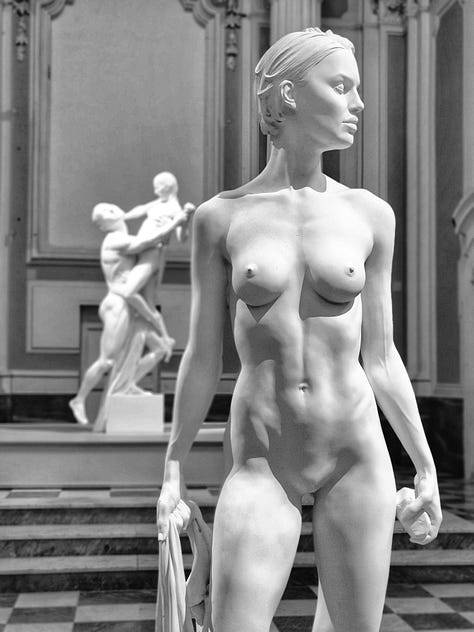
One cannot overlook Ajax and Cassandra, a sculpture reminiscent of Bernini’s The Rape of Proserpina. This powerful piece captures a dramatic moment of tension and emotional intensity, showcasing Jago’s ability to channel the baroque spirit while infusing it with his unique perspective.
Finally, Venus stands as a celebration of timeless beauty and the human form. This exquisite sculpture, with its flowing lines and delicate details, pays homage to classical ideals while remaining distinctly contemporary in its execution.
There are many other works by Jago worth seeing, but I encourage you to experience them in person as soon as you can.
The Church of Sant’Aspreno ai Crociferi provides an unparalleled backdrop for Jago’s art. This sacred space, located near the bustling center of Naples, is steeped in history and amplifies the spiritual dimension of his work. Walking through the exhibition, I felt an almost sacred reverence for the pieces on display. The interplay of light and shadow within the church’s architecture seemed to breathe life into the sculptures, creating a dialogue between the art and its surroundings.
Church of Sant’Aspreno ai Crociferi in Naples is situated in the heart of the city, in the historic Sanità district of Naples, not too far from Via dei Tribunali and on Via Sant’Aspreno, a historic site that enhances the display of Jago’s works.
If you find yourself in Naples, I cannot recommend enough a visit to this exhibition. It is a chance to witness the work of an artist who is redefining what it means to sculpt—not just marble but also the human experience. Jago’s art is a testament to the enduring power of creativity, and seeing it in person is nothing short of transformative.
As always, if you want to use any of the photos from my visit, please remember to give credit to the author. Happy exploring!




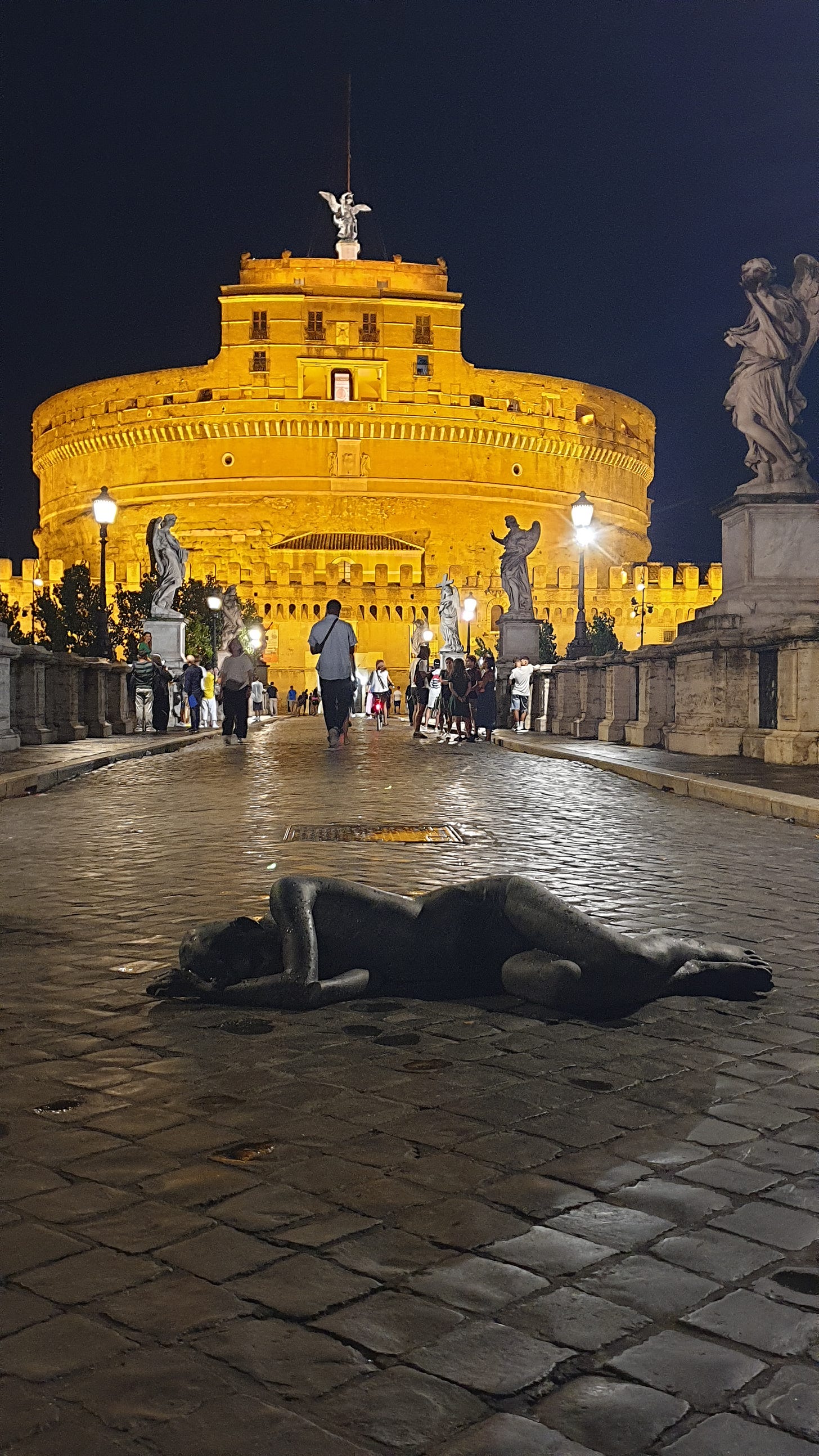
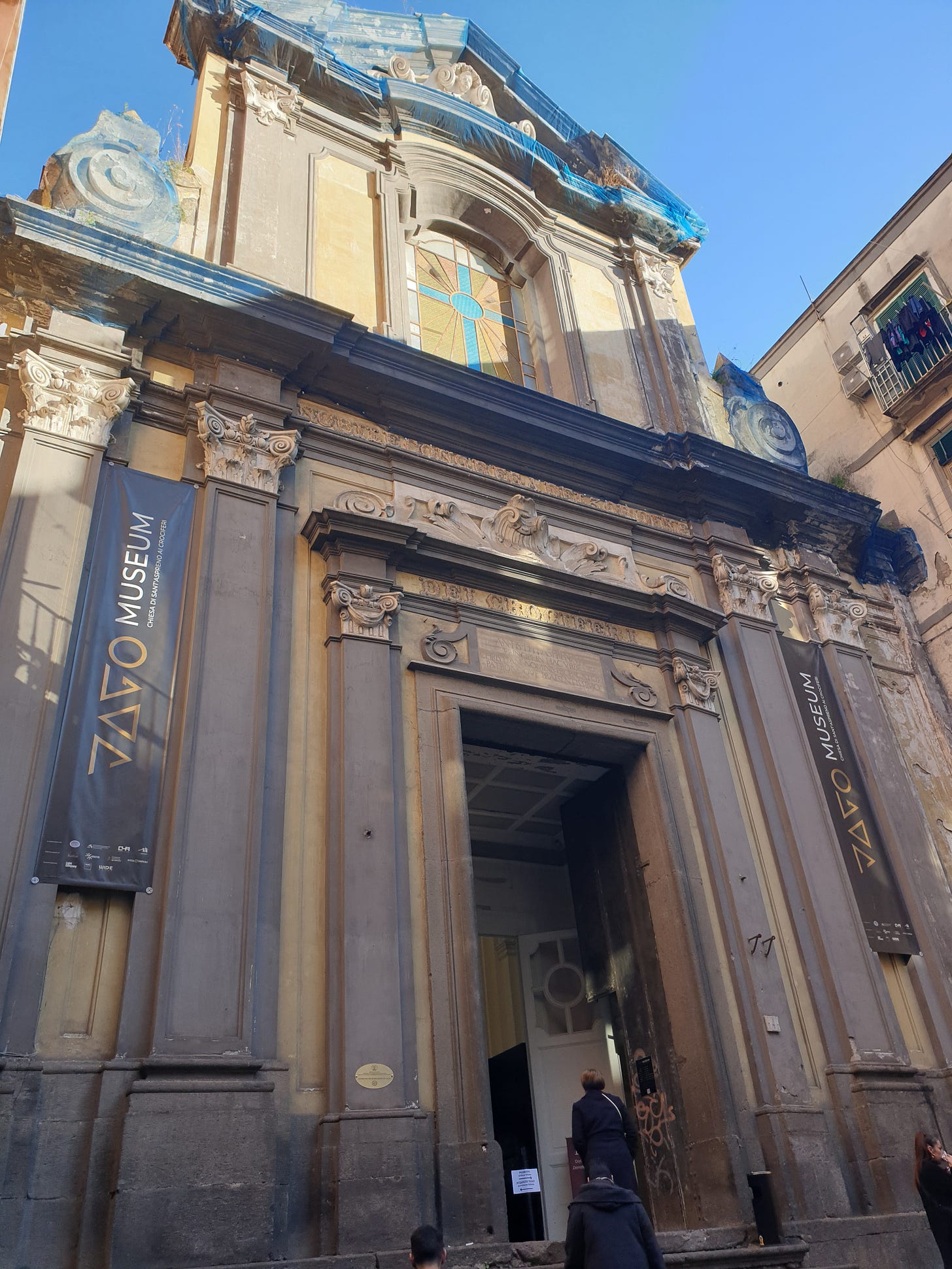

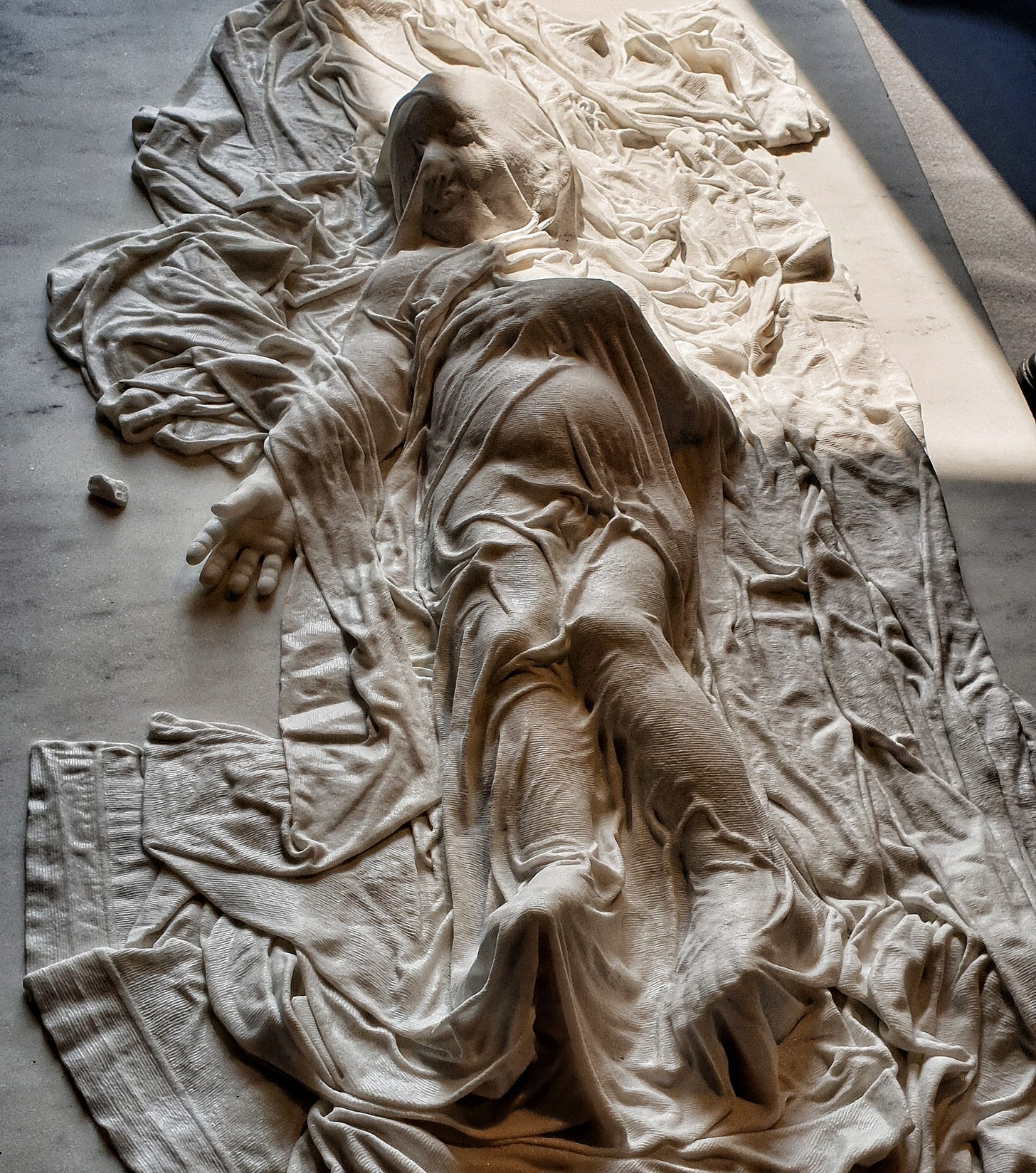
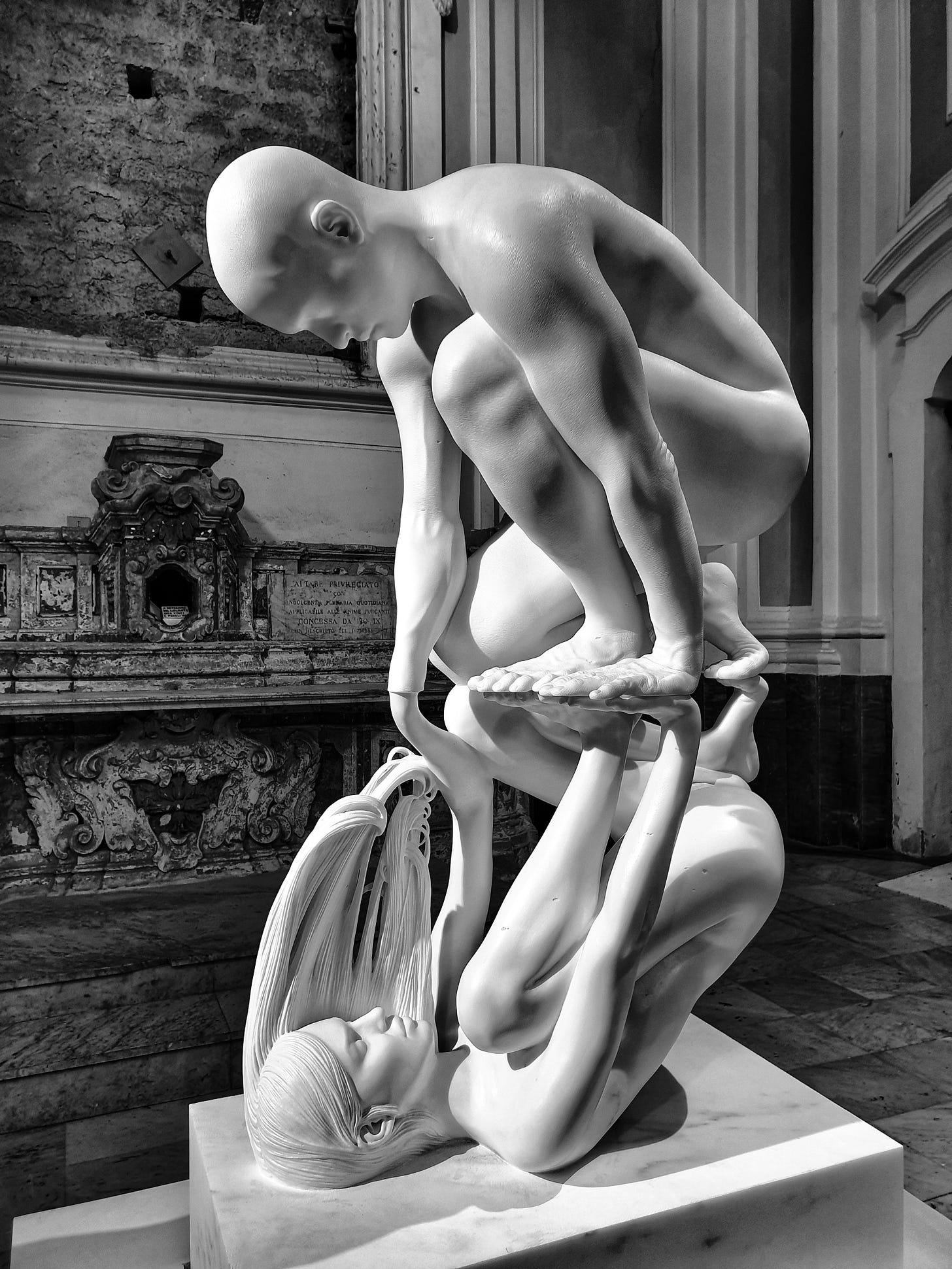
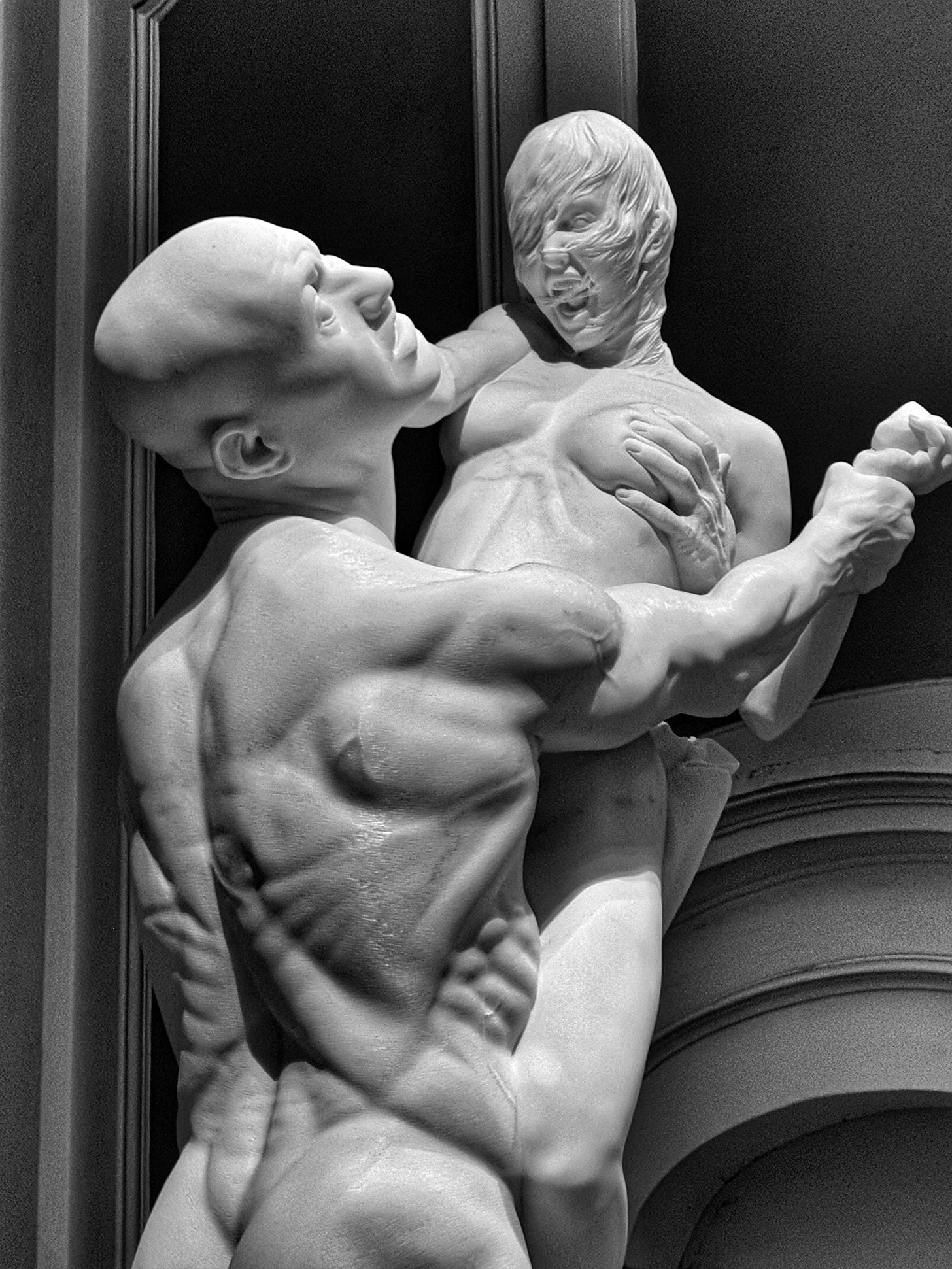

I visited Jago’s museum in the Church of Sant’Aspreno ai Crociferi in Naples a couple months ago and his work took my breath away. To see his work in person is such a special, emotional experience. I’m so happy to see your essay on his work! 🤍
Un ricordo emozionante la mostra di Jago a palazzo Bonaparte, con la presenza straordinaria di Jago stesso